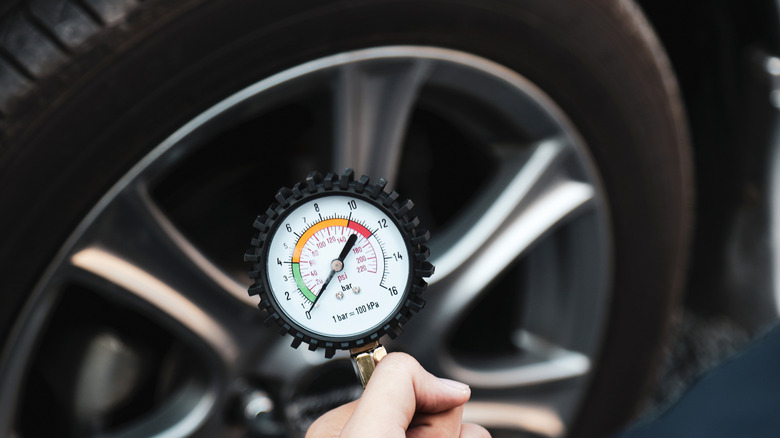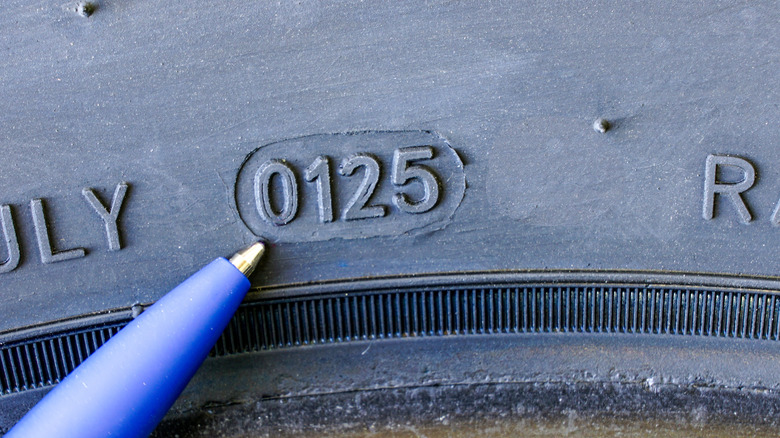How Long Do Tires Last With Low Mileage?
Tire lifespan is influenced by a multitude of factors. On average, new tires could last upwards of 70,000 miles before the tread depth falls at or below 2/32 of an inch (1.6 mm). At that point, it's time to replace the tires before they go dangerously bald, but what if you don't drive often? Does age play a factor in the lifespan of tires?
The answer is yes. Like the other parts of your car, the tires are susceptible to thermo-oxidative stress when exposed to extreme heat, direct UV radiation, wind, and rain. New tires from the factory contain antiozonants to keep the rubber soft, grippy, and pliant while protecting against sun exposure. Those anti-ozone agents are the reason why tires turn brown due to infrequent cleaning. Without them, the tires won't stand a chance against the effects of aging.
Despite the infusion of anti-aging chemicals during manufacturing, your tires won't last forever, even if they have low mileage. Tire life is not only determined by age, but the conditions during storage are also crucial. It's why tires on vehicles that spend a lot of time outdoors will age faster than if they were in an enclosed garage, because heat and other environmental factors will decrease the lifespan of any tire. As they age, tires can develop fissures and cracks, which could lead to air pressure loss, tread separation, or loss of control while driving.
Replace tires that are more than six years old
There's an easy way to know how old your car's tires are. The tire sidewall contains numbers and letters to indicate the brand, model, load rating, size, and speed rating of the rubber. It includes the number on your tires you need to check, the Department of Transportation (DOT) Tire Identification Number (TIN), which is the marking worth checking in determining the tire manufacturing date. The TIN contains information for the tire size codes, tire plant, and the manufacturer, but the last four numbers after the PIN will indicate the week and year of manufacturing.
Look for the DOT marking on your tire's sidewall and check the last four numbers. The first two digits will indicate the week, from 01 to 52, and the last two digits represent the year of manufacturing. For instance, if you found the numbers 0523 after the DOT code, it means manufacturing occurred during the fifth week of 2023. From that data, you can determine the age of your car's tires.
The National Highway Traffic Safety Administration (NHTSA) has yet to issue rules and guidelines on tire aging. However, carmakers and tiremakers endorse replacing tires that are six years or older, regardless of the remaining tread depth. Even if the tire is less than six years old, replace it if the rubber has visible cracks, damage, deformities, or is leaking air.
Proper maintenance will save your tires
Just like how changing the engine oil frequently will extend the useful life of your car's engine and contribute to its overall mechanical reliability, proper tire maintenance will ensure you get the most out of every tire, especially now that new tire prices have gone through the roof. Checking the tire pressure regularly is one of the most important things you can do to prolong the life of your tires.
Overinflation will wear out the middle part of the tread faster, while underinflation will cause overheating and undue wear on the tire shoulders. Check the owner's manual, or the tire placard on the driver's side door jamb to determine the recommended inflation pressure of your vehicle.
Moreover, it's a stellar idea to have the tires rotated every 6,000 or 7,000 miles to promote even wear, and you should get a wheel alignment at least once every 6,000 miles, especially if symptoms such as uneven wear and pulling are evident. Having the wheels aligned will also reveal issues with the suspension and steering, such as worn-out tie rods, bushings, ball joints, and the rack end, before they worsen. Remember, suspension problems and steering faults will undoubtedly affect tire life.


